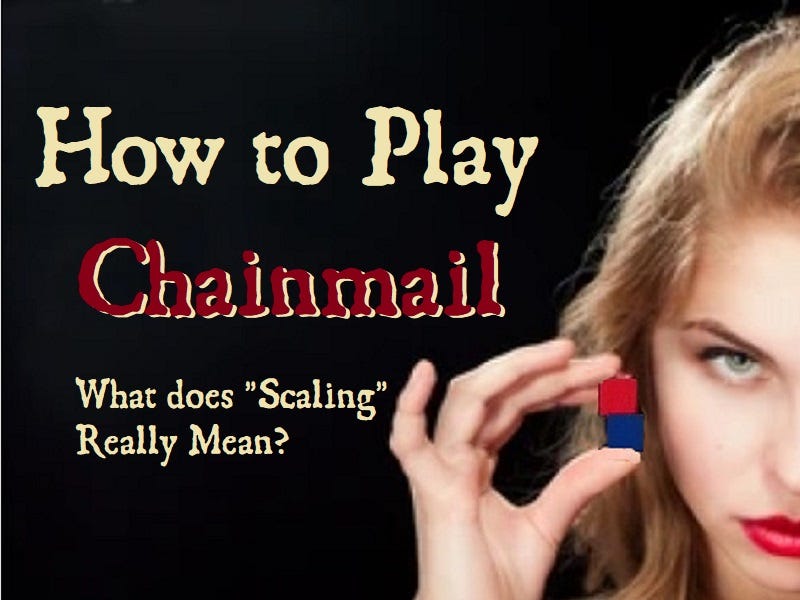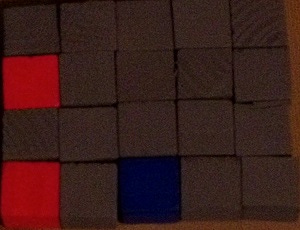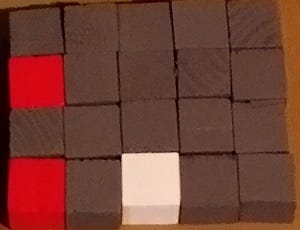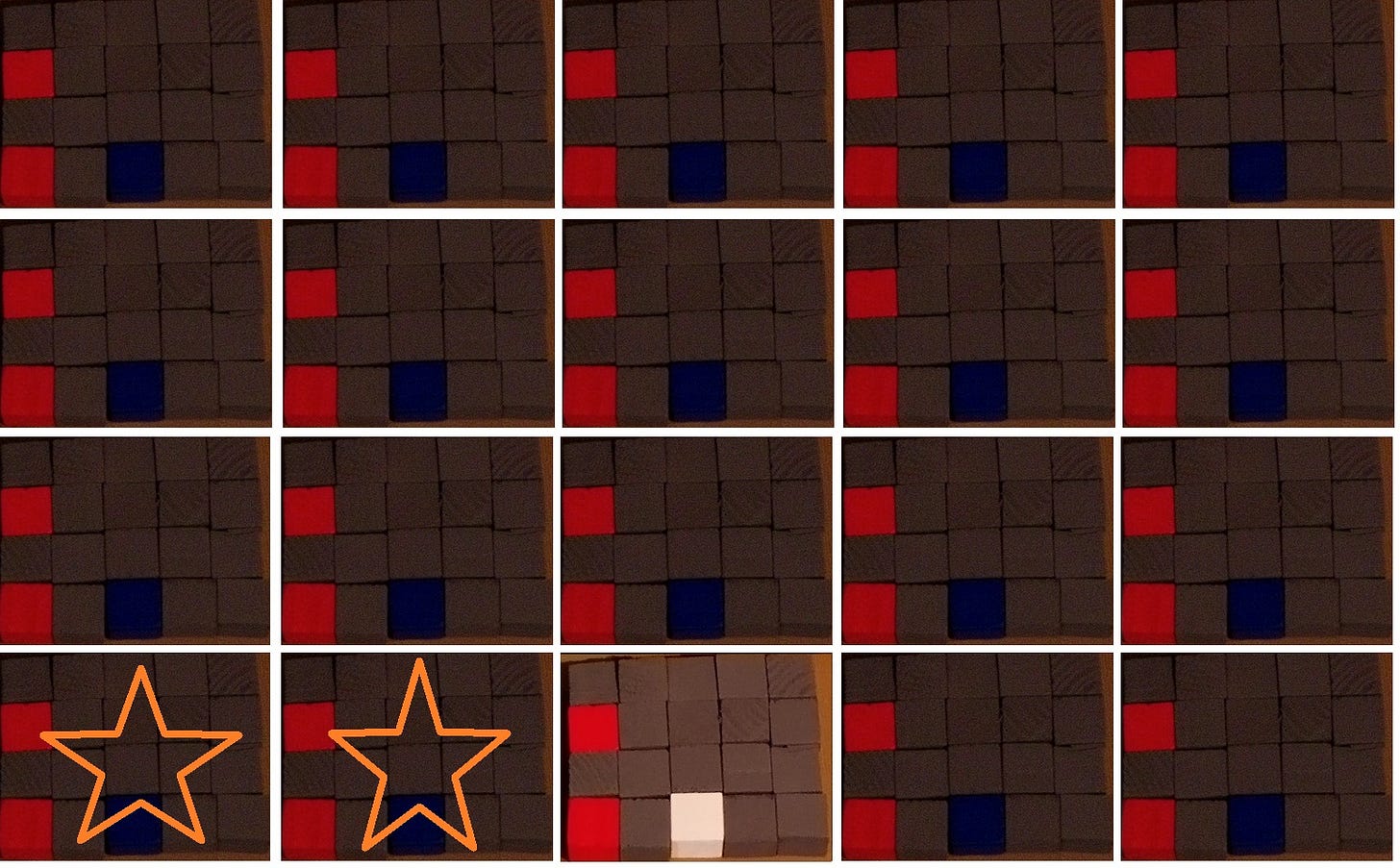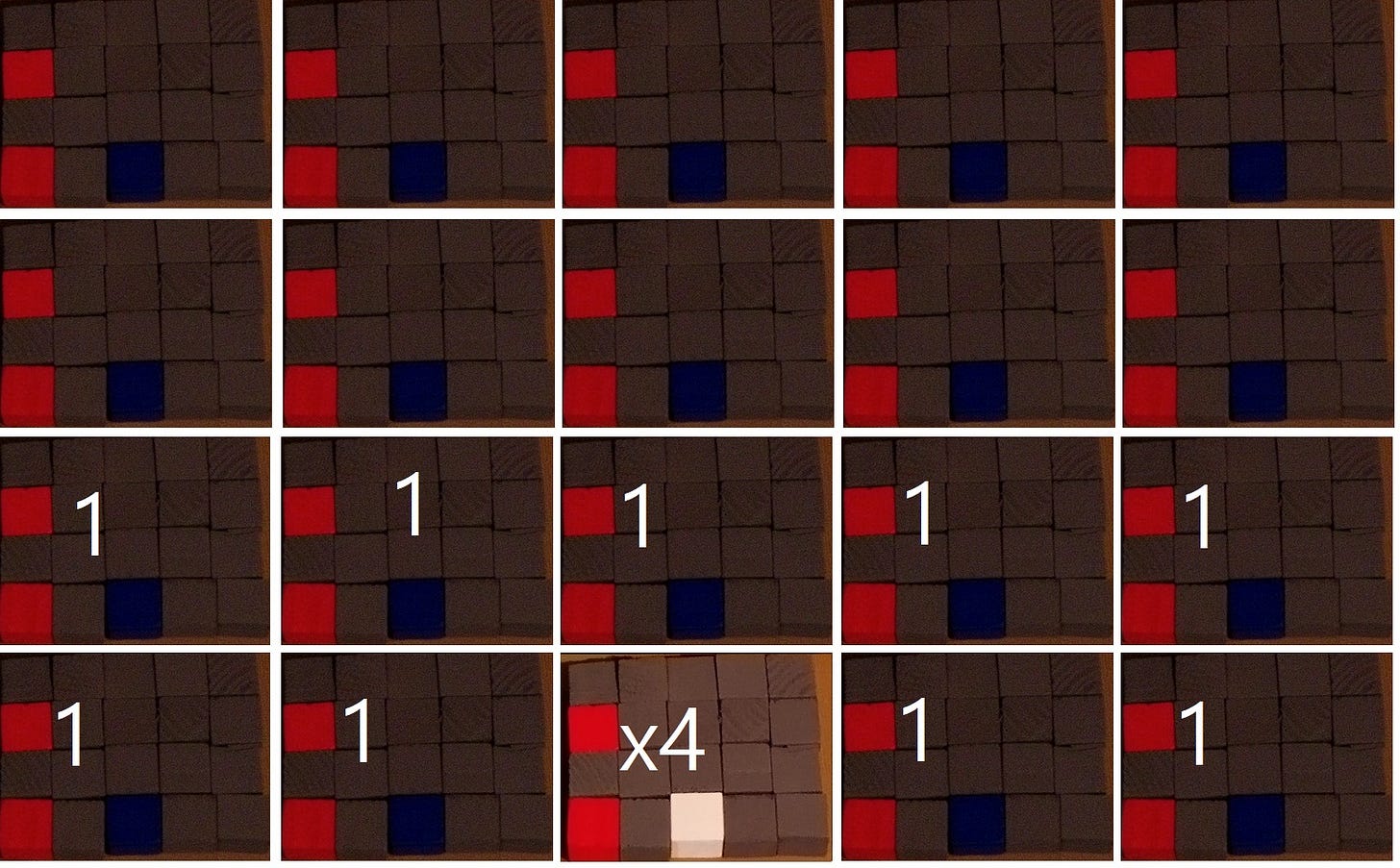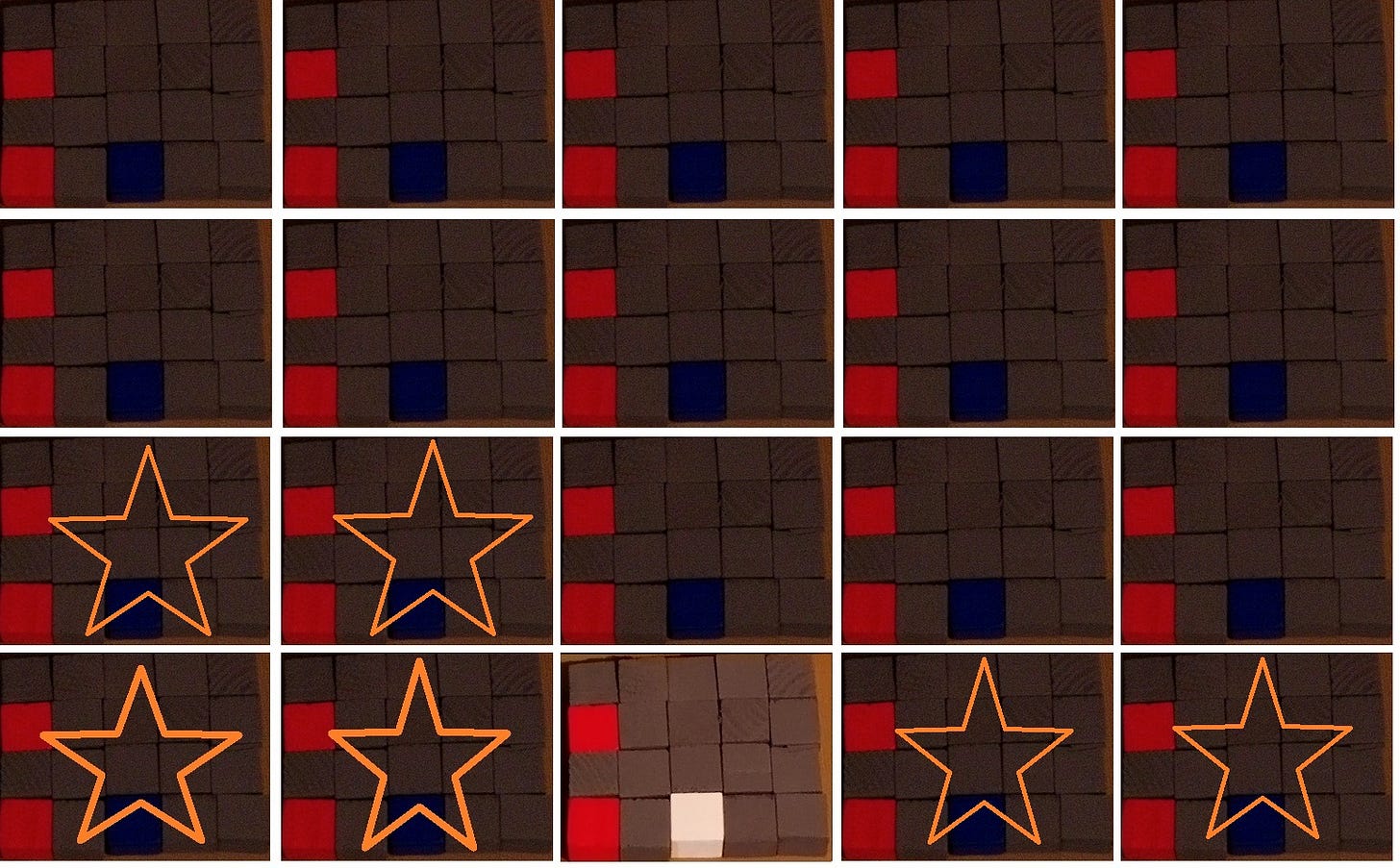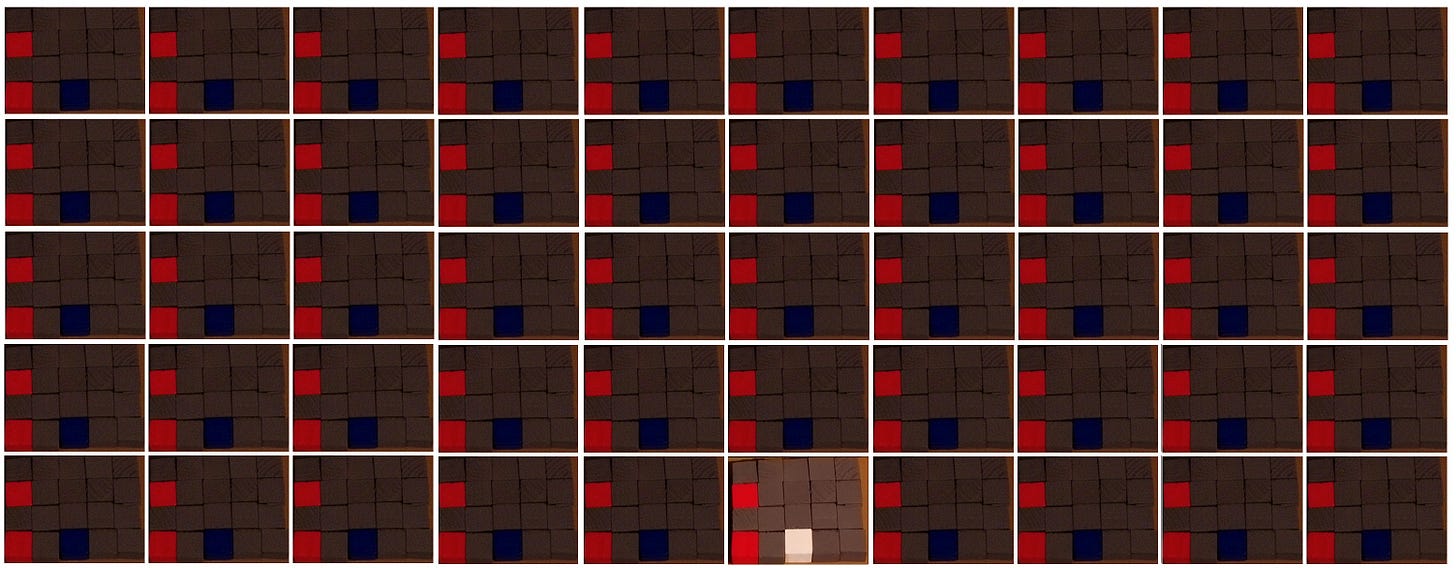How to Play Chainmail - Scaling Melee
& Figures with More than One Hit Die
One of the great difficulties with Chainmail, and other miniature wargames, is how to incorporate powerful individuals into the abstracted level of “1 figure represents N men”.
When playing at a Skirmish-level, this is easy because 1 figure typically represents 1 actual combatant. Skirmish-level games can get pretty big, though, upwards of 200-300 figures on a side. This can take a lot of space, and time, that one may not have available for a number of reasons.
Actual space to play the game, or available period of time.
You need to resolve the battle quickly, as in an RPG session.
Perhaps you don’t have 500-600 figures, chits, Scrabble pieces or cubes!
Scaling
The concept of scaling allows you to play a larger game with fewer game pieces. It typically takes less time as well. Using one figure (or chit or cube) to represent 10, 20, or more actual combatants reduces the footprint and time commitment.
But how do you handle important or powerful individuals in the game, such as Heroes, Commanders, Wizards, etc.?
You can abstract them into one of the figures in a larger unit, effectively making them a part of a larger group. This creates a question of how to “improve” that unit, to reflect the addition of the individual.
You can use a single figure on a 1:1 scale, but does the game have a “realistic”, or at least satisfying, method of resolving any combat between that heroic figure and an abstracted unit of multiple figures, each of which represents 20-some men. It seems reasonable that a single figure representing 20 men could “kill” a single figure representing a heroic warrior, but is the reverse true? Is it reasonable for a single heroic figure to “kill” multiple figures, perhaps as many as 60, 80, or 100 men?
The recent discussion about “multiple Rounds of melee in one Chainmail Turn” has rekindled discussion about this dilemma.
Warhammer Fantasy Battle solves this dilemma with the conceit of being a “Fantasy Battle Game” that is a disguised 1:1 Skirmish game. And you will need hundreds of minis to play big Skirmish battles.
Chainmail and AD&D attempt to accomplish something similar, by scaling 0-level combatants into single figures representing 20 or 10 men, respectively, and using one figure to represent a powerful individual. This individual can “kill” multiple scaled figures, leading to the preposterous result that a single 4th-level fighter figure can make four attacks and possibly kill 4 abstract figures (representing 80 men).
I do not find this solution to be satisfying.
Chainmail Scaling
This idea is a "reverse engineering" of what 1:20 scale means, in terms of representing troops and Heroes on the Chainmail battlefield. (and soon the Leader of Men ™️ battlefield)
This is where it led:
A single figure in Chainmail is 1:20 scale, representing 20 actual soldiers.
In 1:1 scale that would look like this:
The gray blocks are 0-level soldiers. Light Foot, Armored Foot, whatever.
The red blocks represent L1 sergeants (which aren't mentioned in OD&D but we know about from AD&D) & the blue block represents a L3 Lieutenant (Mentioned in Naval Combat, Command Control & in AD&D)
The above formation is what is represented by one figure on the table.
The next image represents a block of 20 Light Foot troops.
A block of 20 "Light Foot"
The above pic would be represented by 20 figures on the table.
Each of these figures can take one hit, then it becomes a casualty.
We know from other games of the period, especially those rules used for Campaign play, that a casualty does not mean all of those men are DEAD. Some are wounded, some are merely scattered.
But, 1 hit, or 1 HD of damage, is enough to make one figure (or 20 actual men) no longer effective on the battlefield.
Now, we map this onto Man to Man combat, where 1 man can take one hit, a Hero can take four, etc. according to their HD.
(And here is the revelatory part) A figure representing a Hero is NOT A SINGLE MAN who gets 4 attacks and can "kill" 80 men (four figures at 1:20).
A Hero figure represents the L4 Fighter AND a retinue of 0-level soldiers, plus 2 Sgts.
This is a Hero figure, “zoomed in” to 1:1 scale.
As the abstraction indicates, one figure is able to take one hit. Which, according to the diagram is "technically" 3 HD worth of damage to take out the Lt. and other troops, enough to make the figure ineffective in combat.
A hero has 4 HD, so the Hero (The actual PC/NPC and the 19 other men represented by his single figure on the table) will take 4 hits to neutralize.
The next pic is a representation of a unit of 19 Light Foot with a Hero.
If a unit of 19 Light Foot takes 2 HD of damage, it will lose 2 figures.
This unit of Light Foot, if armed with Spears & facing another unit of Light Foot, will get to roll a total of 13 dice in an attack, 9 dice for the 0-level troop Figures, plus 4 for the Hero.
If a unit of 19 Light Foot with a Hero takes 6 HD of damage, it will lose 6 figures, but not the Hero, as he is "the last figure in a unit that will be killed by regular missile fire or melee" (Chainmail, p30)
To eliminate the entire unit, AND the Hero, it would have to take a cumulative total of 23 HD of damage.
The Hero FIGURE at 1:20 scale has 4 HD and needs to accumulate 4 HD of damage in a single turn.
I posted this earlier on CWR:
IMHO a Chainmail "Melee" consists of one or more ROUNDS of hand-to-hand combat in a single TURN.
There may be multiple ROUNDS in a Turn, because the TURN cannot end with combatants "locked in combat". One side or the other MUST fall back, retreat, or rout.
It is abstracted to accommodate the 1:20 scale turn = 1 minute.
In Man-to-Man a Hero needs to take 4 hits in one TURN, i.e., "simultaneously", because that is 1:1 scale.
In 1:20 scale combat the Hero needs to take 4 hits in 1 MELEE, during the same TURN.
April 8, 2024
This system will then scale, for any PC/NPC that joins a unit of "regular" men, with the figure representing that PC/NPC being able to take one hit per level, AND needed to accumulate ALL of these hits in ONE melee during ONE Turn.
I would also submit that this method can scale up to as large a ratio as you wish. This is what a single figure at 1:50 would look like, deconstructed:
Below, a unit of 50 figures, including a Hero, at 1:20 scale:
Does this approach make sense?
Does it make it easier to understand how a “single” Hero figure can make four attacks and possibly cause four casualties, four figures representing 80 men?
Over the next couple of weeks we’ll be playing a large game of Chainmail, with units of up to 50 figures . We’ll be testing both the “Multiple Rounds per Turn” methodology and how this method of scaling Heroes and Superheroes works. Be sure to subscribe, you don’t want to miss this!
I’d love to continue the conversation, please leave a Comment below.



